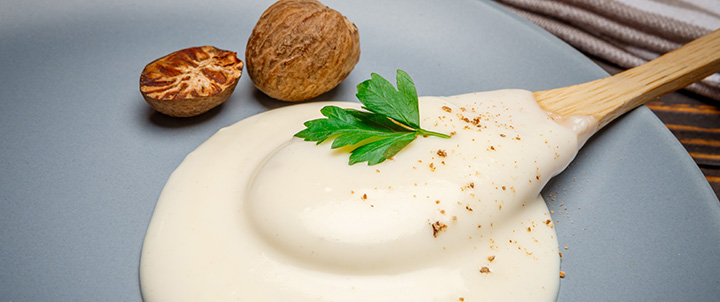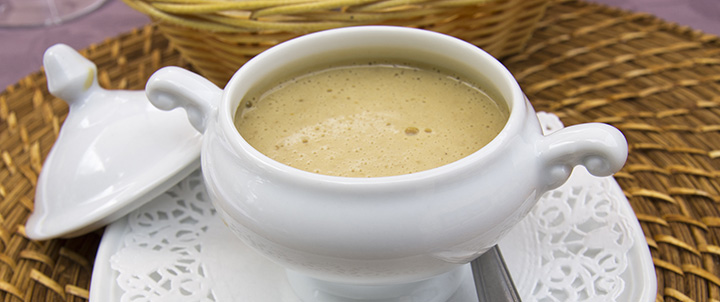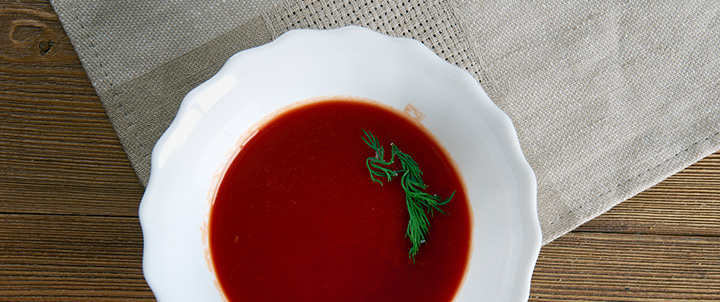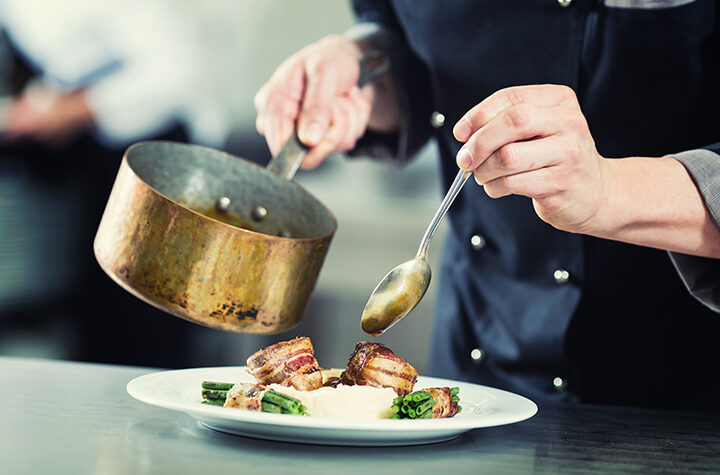Hollandaise Sauces
Hollandaise sauce is a rich creamy sauce that uses butter as a base and is generally thickened with egg yolks. This sauce is often flavored with cayenne pepper, peppercorns, lemon, or vinegar. They can be made into secondary sauces such as mousseline, bearnaise, maltaise. Hollandaise sauces are often served with eggs, vegetables, or poultry.
Mousseline Sauce
Mousseline is a luxurious, light, smooth and very rich version of a classic Hollandaise sauce but uses heavy cream that has been whipped and airy. The mousseline needs to be served with other equally delicate textured foods, like fish and eggs.
Béarnaise Sauce
Béarnaise sauce is simply an emulsification — egg yolks and butter cut through with vinegar flavored with tarragon and shallots, with a pinch of black pepper. The difference between it and Hollandaise is only in the flavoring: Béarnaise uses chervil, shallot, peppercorns, and tarragon in a reduction of vinegar and wine, while Hollandaise is a reduction of lemon juice or white wine vinegar, with white peppercorns and a pinch of cayenne.
Maltaise Sauce
Maltaise sauce is a classic sauce made by adding the juice of blood oranges to a basic Hollandaise. This sauce is traditionally served with asparagus.
Red Sauce
Red sauces use a tomato base and are thickened with purees, a reduction, or a roux. Red sauces can be flavored with meat stock, mirepoix, or salted pork. Other sauces commonly made from red sauce include puttanesca, Creole or Spanish sauce. Red sauces are very versatile and can be served with nearly everything, including pasta, vegetables, fish, beef, veal, poultry, or polenta.
Other French Sauces
Mayonnaise is a French word for a thick, creamy sauce or dressing commonly used on hamburgers, sandwiches, salads, and with French fries. It forms the base for various other sauces, such as tartar sauce, rouille, fry sauce, and remoulade.
Beurre blanc is a warm emulsified butter sauce made with a reduction white wine, typically, Muscadet and shallots into which softened whole butter is whisked in off the heat to prevent separation. The small amount of emulsifiers naturally found in butter are used to form an oil-in-water emulsion. Although similar to hollandaise in concept, it is considered neither a classic leading nor a base for other sauces.









